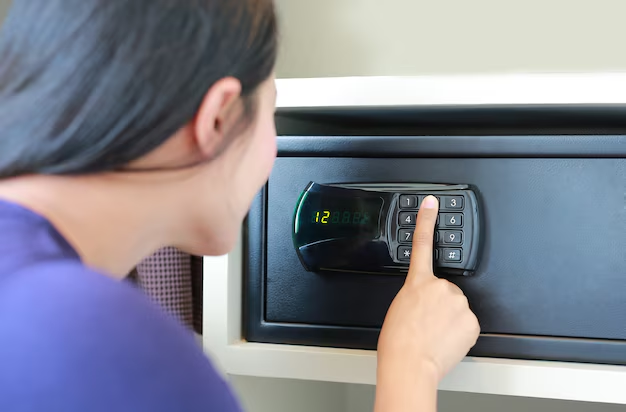Mastering Your LG Refrigerator: Setting and Optimizing Temperature Like a Pro
In today's high-tech world, knowing how to optimize appliance settings can transform your daily routines into seamless experiences. The refrigerator stands at the core of these improvements, silently working to maintain the freshness of your food. Among the many brands available, LG stands out for its blend of design, performance, and smart features. But how do you ensure your LG refrigerator is set at the ideal temperature? Let's delve into this comprehensive guide where we'll cover everything you need to know about setting the temperature in your LG refrigerator, along with some practical tips and industry insights.
Understanding Your LG Refrigerator's Temperature Settings
Importance of Correct Temperature
Food safety and longevity are paramount. The ideal refrigerator temperature is designed to prevent bacterial growth while keeping your food fresh. For most refrigerators, a general guideline is to maintain a temperature at or below 40°F (about 4°C) for the refrigerator compartment, and 0°F (-18°C) for the freezer. However, the ideal setting might vary slightly based on model variations and user preferences.
Identifying the Controls
Most modern LG refrigerators come equipped with an intuitive digital display panel for easy temperature adjustments. This panel can usually be found on the inside edge of the fridge or as part of the exterior water dispensing system. Familiarize yourself with the specific layout in your model to efficiently manage your settings.
How to Set the Temperature in Your LG Refrigerator
Step-by-Step Guide
Locate the Control Panel: Open the refrigerator door and look for the LCD display or control panel interface.
Access Temperature Settings: Use the menu button, typically labeled as 'Settings' or with a gear icon, to access the temperature settings.
Select the Compartment: Toggle between the refrigerator and freezer settings if your model has separate controls for each.
Adjust the Temperature: Use the up or down arrows to adjust the temperature. For optimal results:
- Set the refrigerator to 37°F (3°C)
- Adjust the freezer to 0°F (-18°C)
Finalize Settings: Some models might require you to press a 'set' button to finalize your choice. Consult your specific model's manual if needed.
Advanced LG Models: Smart Features
LG models with smart technology often feature temperature monitoring through a smartphone app. This app can send alerts and allow adjustments directly from your mobile device. Utilizing connectivity features can optimize efficiency, especially when you're away from home for extended periods.
Practical Tips for Optimizing Refrigerator Performance
Organized Storage
Proper organization within your LG refrigerator enhances its cooling efficiency:
- Top Shelves: Store drinks and ready-to-eat foods here as it tends to be slightly warmer.
- Middle Shelves: Ideal for dairy products and leftovers.
- Lower Shelves: Maintain raw meat, poultry, and seafood here for optimum preservation in the coldest sections.
- Crisper Drawers: Adjust humidity settings based on produce and separate fruits from vegetables.
Regular Maintenance
- Clean the Coils: Dusty coils force your refrigerator to work harder, affecting temperature regulation. Clean these every six months.
- Check the Seals: Ensure door seals are tight to prevent cold air leakage.
- Defrost Regularly: If your model doesn’t defrost automatically, plan periodic defrosting to maintain efficiency.
Energy Consumption Insights
Adjusting your LG refrigerator to optimal temperature not only keeps your food fresh but also contributes to energy efficiency, ultimately reducing utility expenses. Given the impact of energy usage, optimizing appliance settings is both environmentally friendly and economically beneficial.
Troubleshooting Common Temperature Issues
Even the most reliable appliances occasionally experience hiccups. Here are a few problems you might encounter with solutions:
Inconsistent Cooling
Problem: Items feel warm in certain fridge areas.
Solution: Check for airflow obstructions — avoid overpacking shelves as this restricts air distribution. Rearrange contents for improved circulation.
Ice Build-up
Problem: Ice accumulation in the fridge or freezer.
Solution: Inspect and adjust door seals first. If seals are intact but ice persists, lower the freezer temperature incrementally.
Digital Display Issues
Problem: Temperature display not working.
Solution: Reset the display by unplugging the refrigerator for about 10 minutes. If unresolved, consult the user manual or contact professional support.
Quick-Reference Summary 📝
Essential Points to Remember:
Ideal Temperatures: Refrigerator at 37°F (3°C), Freezer at 0°F (-18°C).
Location Configuration:
- Top Shelves: Beverages & ready-to-eat items.
- Middle Shelves: Dairy & leftovers.
- Lower Shelves: Raw meats.
- Crisper Drawers: Fruits & veggies, adjusted with the humidity settings.
Routine Maintenance: Clean coils and door seals, schedule regular defrosts for manual models.
Temperature Management: Utilize smart features in advanced models for remote adjustments and alerts.
Practical Tips ⚡
- Avoid Overloading: It disrupts airflow.
- Heart of Efficiency: Regular maintenance boosts energy efficiency and appliance lifespan.
- Connectivity: Embrace smart features to optimize operations remotely.
The process of setting and maintaining the correct temperature in an LG refrigerator is straightforward yet pivotal for optimal performance. Taking these steps ensures your appliance functions efficiently, keeping your food safe and fresh. Remember, a well-maintained refrigerator not only extends its lifespan but also contributes significantly to energy savings.
